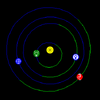You are using an out of date browser. It may not display this or other websites correctly.
You should upgrade or use an alternative browser.
You should upgrade or use an alternative browser.
Eclipses, Conjunctions, Alignments and Celestial Phenomena
- Thread starter Puma
- Start date
Light echoes around RS Puppis
This time-lapse video uses observations from the NASA/ESA Hubble Space Telescope over a number of weeks to show the variable star RS Puppis and its environment. A stunning example of a phenomenon known as a light echo can be seen around the star, creating the illusion of gas clouds expanding out from RS Puppis.
The observations were taken between over a period of five weeks in 2010, and capture the variable star at different stages in its roughly 41-day cycle. The short video is repeated several times to emphasise the light echo mechanism more clearly.
Credit:
NASA, ESA, G. Bacon (STScI), the Hubble Heritage Team (STScI/AURA)-ESA/Hubble Collaboration, and H. Bond (STScI and Pennsylvania State University

dennis
Jedi Council Member
Astronomers identify record-breaking quasar
Using the European Southern Observatory's (ESO) Very Large Telescope (VLT), astronomers have characterized a bright quasar, finding it to be not only the brightest of its kind but also the most luminous object ever observed.
...
"We have discovered the fastest-growing black hole known to date. It has a mass of 17 billion suns and eats just over a sun per day. This makes it the most luminous object in the known universe," says Christian Wolf, an astronomer at the Australian National University (ANU) and lead author of the study published Nature Astronomy. The quasar, called J0529-4351, is so far away from Earth that its light took over 12 billion years to reach us.
...
The matter being pulled in toward this black hole, in the form of a disk, emits so much energy that J0529-4351 is over 500 trillion times more luminous than the sun. "All this light comes from a hot accretion disk that measures seven light-years in diameter—this must be the largest accretion disk in the universe," says ANU Ph.D. student and co-author Samuel Lai. Seven light-years is about 15,000 times the distance from the sun to the orbit of Neptune.
machine learning model failed to spot it
Remarkably, this record-breaking quasar was hiding in plain sight. "It is a surprise that it has remained unknown until today when we already know about a million less impressive quasars. It has been staring us in the face until now," says co-author Christopher Onken, an astronomer at ANU. He added that this object showed up in images from the ESO Schmidt Southern Sky Survey dating back to 1980, but it was not recognized as a quasar until decades later.
Finding quasars requires precise observational data from large areas of the sky. The resulting datasets are so large that researchers often use machine-learning models to analyze them and tell quasars apart from other celestial objects.
However, these models are trained on existing data, which limits the potential candidates to objects similar to those already known. If a new quasar is more luminous than any other previously observed, the program might reject it and classify it instead as a star not too distant from Earth.
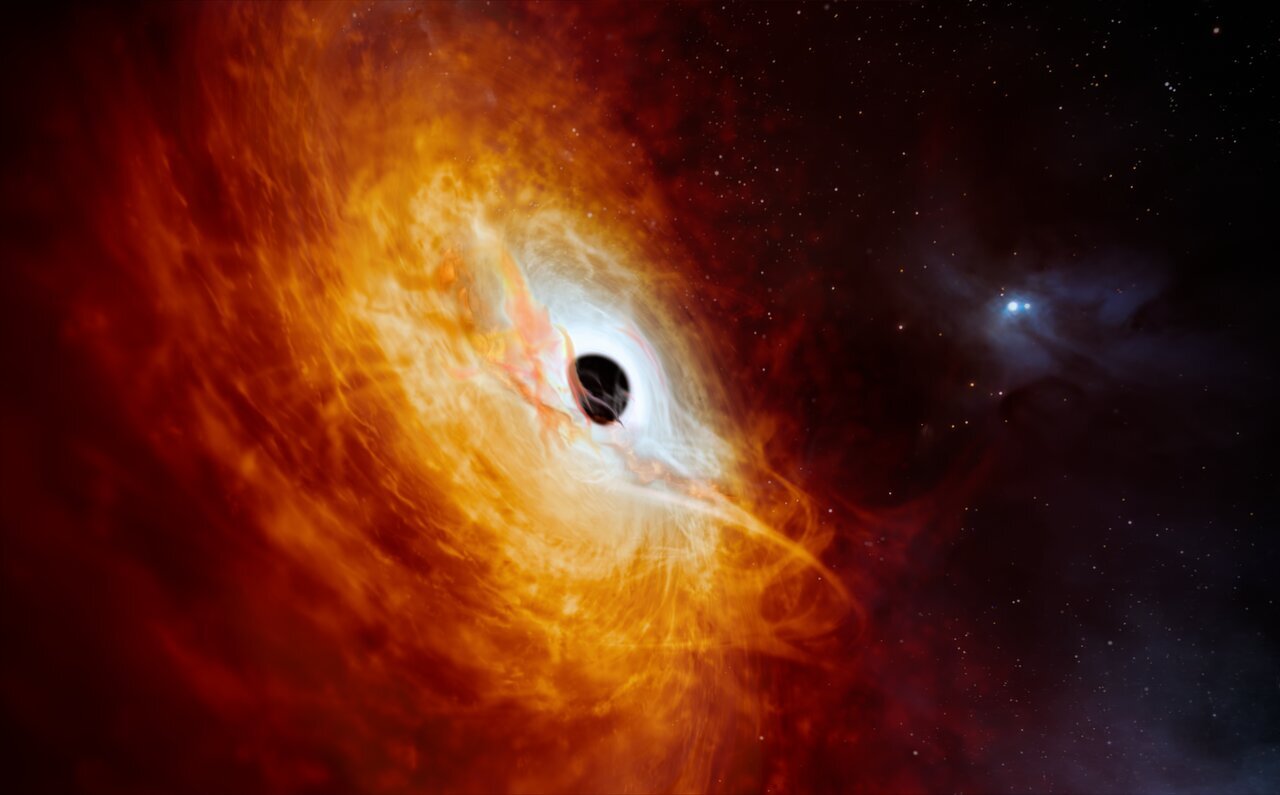
Brightest and fastest-growing: Astronomers identify record-breaking quasar
Using the European Southern Observatory's (ESO) Very Large Telescope (VLT), astronomers have characterized a bright quasar, finding it to be not only the brightest of its kind but also the most luminous object ever observed. Quasars are the bright cores of distant galaxies, and supermassive...
Saturn and Mercury both behind the sun today
Saturn and Mercury will be in superior conjunction. That is, they will both be in line with Earth on the far side of the sun. Unlike some other conjunctions, this won’t be visible in Earth’s sky due to the brightness of the sun. But we can see this event if we take a look at the imagery from the SOHO spacecraft’s LASCO C3 instrument. Check it out in the video; Mercury is coming in from the solar west (right), and Saturn from the solar east (left). Though Saturn has a diameter more than 20 times that of Mercury, it’s so much further away from us that it appears the smaller and dimmer of the two. Conjunctions really put things in perspective!
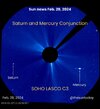
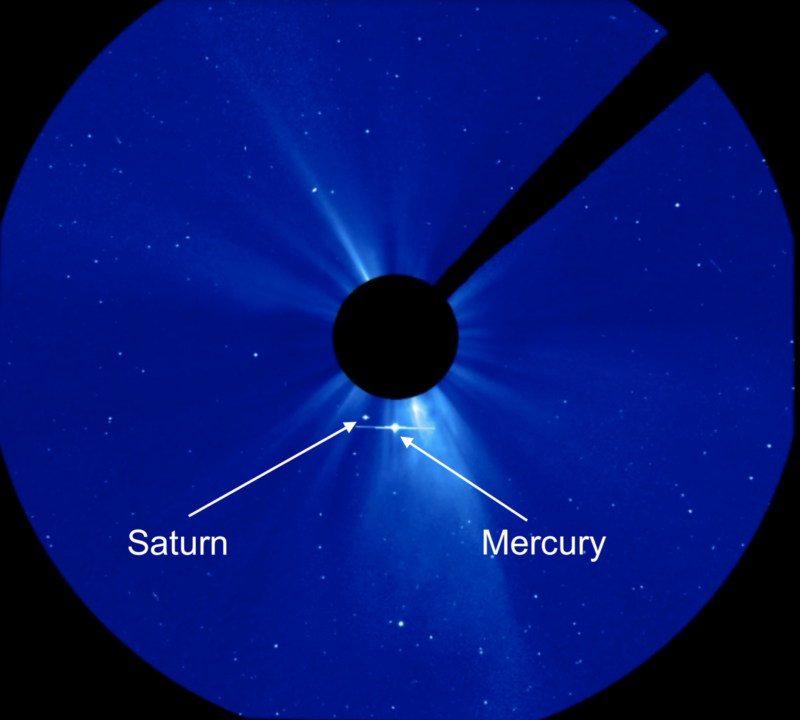
| EarthSky
Olivierlejardinier
Jedi Council Member
From Solar System Geometry Survey site :
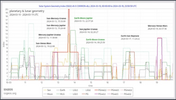

The grand Sun-Jupiter-Uranus conjunction on 13 March, will uniquely coincide with additional conjunctions involving Mercury and Venus and also the Moon. This combination can result in large seismic activity, potentially reaching well over magnitude 8, most likely between 14 and 17 March.


Liliea
Jedi Council Member
Comet 12P/Pons Brooks
An explosive green comet is heading towards Earth, currently streaking across the nearby Andromeda galaxy in the night sky.Comet 12P can be witnessed live over the peeled sky by searching the night sky of the Andromeda galaxy or in real time thanks to two live streams from the Virtual Telescope Project, which will show the cosmic spectacle from the project's observatory in Manciano, Italy, starting at 2:30 p.m. ET on Sunday (March 10) and Tuesday (March 12).Comet 12P/Pons Brooks (12P) is about 17 kilometers wide and orbits the Sun in a highly elliptical orbit approximately every 71 years. It is a cryovolcanic comet, or ice volcano, meaning that it occasionally erupts when solar radiation cracks its icy shell, or nucleus, allowing it to eject a combination of ice and gas, known as cryomagma, into space. When this occurs, the cryomagma massively expands 12P's coma - the cloud of gas and dust surrounding the nucleus - making the comet appear much brighter.

The image above comes from the combination of ten, 120-second exposures, remotely taken with the Samyang 135+Paramount ME+ZWO ASI 6200MC Pro robotic unit available as part of the Virtual Telescope Project facility in Manciano, Italy. The covered field of view is about of 16 x 11 square degrees. The picture shows a superb perspective couple: the comet and the Great Andromeda Galaxy, aka Messier 31.
It is worth to mention that at the time of the image above the comet was at about 245 million of km from us, while the Andromeda Galaxy is more than 2 million light years away.

Virtual Telescope's WebTV - The Virtual Telescope Project 2.0
This page hosts the Virtual Telescope's webTV featuring live, real-time observing sessions and many more events, connected to our activities
 www.virtualtelescope.eu
www.virtualtelescope.eu
A possible visible comet this October - C/2023 A3 Tsuchinshan.

 earthsky.org
earthsky.org
A beautiful, graceful cometary apparition might be in store for us. It’s been a while since we’ve had a wispy comet tail stretch across our evening sky. In October 2024, in particular October 14 through 24, C/2023 A3 (Tsuchinshan-ATLAS) could be bright in the early evening sky. With ten months to go, all looks good for a great showing.
The comet will make its closest approach to the sun (its perihelion) on September 28, 2024. At that point, some estimates are suggesting it might be around magnitude 0.7. That brightness rivals some of the brightest stars in the sky (though, for comets, the brightness is diffuse, not in a single point).
And of course, as with all comets, be aware that they are finicky balls of ice and dust, often not living up to expectations.

| EarthSky
NOVA EXPECTED IN THE NEXT FEW MONTHS: It is in the constellation of Corona Borealis - an arc of stars between Vega and Arcturus (part of the "summer triangle"). The nova is predicted to be near the 3rd star to the east of the brightest star in the constellation (see maps below).
Keith Strong vía X


A ‘new star’ from a nova outburst is expected soon
View attachment NovaCygni_ArtistConcept_watermarked-ezgif.com-gif-to-webp-converter.webp
Artist’s conception of red giant star and white dwarf. A stream of material flows from the red giant to the white dwarf, eventually causing a runaway thermonuclear reaction on the white dwarf that will appear as a new star, or nova, in earthly skies. Image via NASA/ Goddard Space Flight Center.
▪︎ A famous, distant variable star called T Coronae Borealis is predicted to become visible to the unaided eye in 2024.
▪︎ It could be a once-in-a-lifetime viewing opportunity to view the star, since it waxes in brightness – becoming visible in our skies as a nova or “new” star – only about every 80 years.
▪︎ This star last erupted in 1946. And astronomers believe it will do so again between February and September 2024. Find its constellation now. Then prepare to be amazed when the “new” star, or nova, pops into view.
A nova could trigger a new star soon
T Coronae Borealis, or T CrB, is located 3,000 light-years away from Earth. It is a recurring nova with outbursts about every 80 years. Its last outburst was in 1946, and astronomers believe another will occur between February and September 2024.The star system, normally magnitude +10, is far too dim to see with the unaided eye. After the nova occurs, it will jump to around magnitude +2. That is roughly the same brightness to the North Star, Polaris.
Once its brightness peaks, it should be visible to the unaided eye for several days and just over a week with binoculars before it dims again, possibly for another 80 years.
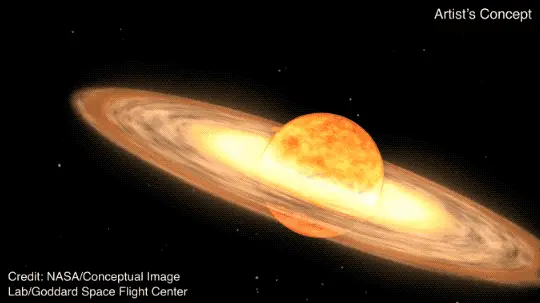
| EarthSky
Haiku
Jedi Master
Just when is the first of the year …
I watch the first of the year in several countries, notably the first of the year on the Gregorian calendar which much of the world recognizes, another is the Chinese first of the year that happened on February 10 this year on the Gregorian calendar. I’m sure that others have noticed this but the new year in old and ancient times was not this way, it started much later, here is a quote …
‘The oldest recorded new year festivities date back to 2000 B.C. in ancient Mesopotamia, where Iraq is now. Called akitu, the festival, which could last for up to 12 days, started on the day of the first new moon after the spring equinox—the day when sunlight and darkness are equally long. It usually fell around March.’
This make sense to me, the first of the year is typically a party, not that I mind partying in the middle of winter, but springtime seems to me to be a better time to have a party, especially in olden times, much warmer than the middle of winter when you are trying to wrap up to keep warm. Another quote for you …
‘During the spring equinox, the Earth's axis and its orbit line up so that both hemispheres get an equal amount of sunlight. The word equinox comes from two Latin words meaning equal and night.’
This year March 19 was the spring equinox, the new moon in March was on March 10 which is before the equinox. That makes the next new moon happening on April 9 is this new moon this year.
Goodness, this makes the first day of the ancient Mesopotamian exactly on the same day we are having a eclipse. Now the C’s have stated ‘After the first of the year’ in the transcripts, is this the first of the year that they are talking about. Coincidence comes to mind, you make the call. As for me, I will be watching …
And since I have your attention, here are the planetary positions for this date. One thing to note is that when Venus swings around next year around this time and comes close to Earth, we will be near Mars. Could be a nice alignment then. (Source: Solar System Live (fourmilab.ch) Here are the plots for April 9th this year …
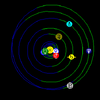

Now bear with me as I go a little out of the box here, this is from Pierre’s understanding of the solar system.
You as a person have a home or a location that you call your birthplace, you have a connection to it in varied ways. Now I relate this to the slaves that were stolen from their homes in Africa, do you think that they forgot their homes, you better believe they didn’t, they still have a connection to their homes even throughout the generations.
Now I am lucky as I am still in the place I call home from one year old and I find a connection here, unfortunately it is not my birthplace. I have been back to my birthplace, I see no connection to it.
Now Pierre came up with the theory that Venus as a comet caused a bit of distress in our solar system. In his theory, Venus stole quite a bit of material from Mars and deposited it here on Earth through cataclysmic events. This material that we received from Mars, mostly water, has a soul and I would expect that it still remembers it’s home. And as we get close to Mars, it calls out to this material and may call it to come home, a physical impossibility but I still believe there a connection as we get near it.
Now it just happens that we will be swinging around the sun and by each other sometime later this year and lasting for months after that. This time next year we will be past it. but during this time I believe that Mars will be calling its material home, not that it will happen, as I said it is a physical impossibility. But what if this material feels this pressure and rebels? Just think on this as we move further into this year.
Ta Ta for now and hold onto your britches, it could be a roller coaster ride starting with this Eclipse next month. Haiku …
I watch the first of the year in several countries, notably the first of the year on the Gregorian calendar which much of the world recognizes, another is the Chinese first of the year that happened on February 10 this year on the Gregorian calendar. I’m sure that others have noticed this but the new year in old and ancient times was not this way, it started much later, here is a quote …
‘The oldest recorded new year festivities date back to 2000 B.C. in ancient Mesopotamia, where Iraq is now. Called akitu, the festival, which could last for up to 12 days, started on the day of the first new moon after the spring equinox—the day when sunlight and darkness are equally long. It usually fell around March.’
This make sense to me, the first of the year is typically a party, not that I mind partying in the middle of winter, but springtime seems to me to be a better time to have a party, especially in olden times, much warmer than the middle of winter when you are trying to wrap up to keep warm. Another quote for you …
‘During the spring equinox, the Earth's axis and its orbit line up so that both hemispheres get an equal amount of sunlight. The word equinox comes from two Latin words meaning equal and night.’
This year March 19 was the spring equinox, the new moon in March was on March 10 which is before the equinox. That makes the next new moon happening on April 9 is this new moon this year.
Goodness, this makes the first day of the ancient Mesopotamian exactly on the same day we are having a eclipse. Now the C’s have stated ‘After the first of the year’ in the transcripts, is this the first of the year that they are talking about. Coincidence comes to mind, you make the call. As for me, I will be watching …
And since I have your attention, here are the planetary positions for this date. One thing to note is that when Venus swings around next year around this time and comes close to Earth, we will be near Mars. Could be a nice alignment then. (Source: Solar System Live (fourmilab.ch) Here are the plots for April 9th this year …


Now bear with me as I go a little out of the box here, this is from Pierre’s understanding of the solar system.
You as a person have a home or a location that you call your birthplace, you have a connection to it in varied ways. Now I relate this to the slaves that were stolen from their homes in Africa, do you think that they forgot their homes, you better believe they didn’t, they still have a connection to their homes even throughout the generations.
Now I am lucky as I am still in the place I call home from one year old and I find a connection here, unfortunately it is not my birthplace. I have been back to my birthplace, I see no connection to it.
Now Pierre came up with the theory that Venus as a comet caused a bit of distress in our solar system. In his theory, Venus stole quite a bit of material from Mars and deposited it here on Earth through cataclysmic events. This material that we received from Mars, mostly water, has a soul and I would expect that it still remembers it’s home. And as we get close to Mars, it calls out to this material and may call it to come home, a physical impossibility but I still believe there a connection as we get near it.
Now it just happens that we will be swinging around the sun and by each other sometime later this year and lasting for months after that. This time next year we will be past it. but during this time I believe that Mars will be calling its material home, not that it will happen, as I said it is a physical impossibility. But what if this material feels this pressure and rebels? Just think on this as we move further into this year.
Ta Ta for now and hold onto your britches, it could be a roller coaster ride starting with this Eclipse next month. Haiku …
axj
The Living Force
Why would this coming Mars transit close to Earth next year be any different than all the others before? It happens about every 3 years that Earth and Mars pass close to each other.Now it just happens that we will be swinging around the sun and by each other sometime later this year and lasting for months after that. This time next year we will be past it. but during this time I believe that Mars will be calling its material home
Haiku
Jedi Master
Quote:Why would this coming Mars transit close to Earth next year be any different than all the others before? It happens about every 3 years that Earth and Mars pass close to each other.
'Every 2.4 million years, Mars's orbit comes close enough to Earth that its gravity can affect it, tilting Earth's usual path and orientation. This orbital shift causes Earth to be exposed to more sunlight, warming the climate, which, in turn, stirs up ocean currents and makes them stronger.'
Yes, but now it is being noticed, here are a few stories of this.
Mars attracts: How the Red Planet influences Earth's climate and seas
Mars Has an Unexpected Influence on Earth's Oceans and Climate, Repeating Every 2.4 Million Years, Study Finds
Mars has unexpected effect on Earth's deep oceans
Every 2.4 Million Years, Mars Does Something Unexpected to Our Ocean's Depths : ScienceAlert
I'm still looking for where we are today in this cycle. Haiku ...
SPIRALING COMET: Shapeshifting Comet 12P/Pons-Brooks has been a devil, ,a Romulan Warbird, a Millennium Falcon--and now it's a lawn sprinkler. Michael Jaeger photographed the comet's spiralling core from his backyard observatory in Martinsberg, Austria:
Jaeger assembled this movie from a series of pictures he took during the first week of March. Researchers believe that an "ice geyser" on the comet's surface erupted Feb 29th, spewing a reflective plume of space-cold gas and dust into comet's atmosphere. Jaeger's animation shows that plume bent into a spiral shape by the spin of the comet's core.
Comet 12P is currently located in the constellation Pisces, about 15 degrees above the western horizon after sunset for most observers in the northern hemisphere. Shining as brightly as a 5th magnitude star, it is a relatively easy target for backyard telescopes.
Tthe comet will be fairly close to the sun during the total solar eclipse of April 8, 2024.
Dr C. Alex Young said:
No matter how many minutes totality lasts, it will feel like it’s flying by. So drink up as much of the view as you can. Whether you want to tear your eyes away from the eclipsed sun to look around is up to you. During the total eclipse, when the sky darkens, you’ll see the brightest planet Venus pop into view on one side of the sun. On the other side of the sun, you’ll find the second-brightest planet, Jupiter. And if Comet Pons-Brooks is bright enough, you’ll see it between Jupiter and the sun, but closer to Jupiter.
So "the devil" and "the god" will be together to witness the eclipse.
Jaeger assembled this movie from a series of pictures he took during the first week of March. Researchers believe that an "ice geyser" on the comet's surface erupted Feb 29th, spewing a reflective plume of space-cold gas and dust into comet's atmosphere. Jaeger's animation shows that plume bent into a spiral shape by the spin of the comet's core.
Comet 12P is currently located in the constellation Pisces, about 15 degrees above the western horizon after sunset for most observers in the northern hemisphere. Shining as brightly as a 5th magnitude star, it is a relatively easy target for backyard telescopes.
Tthe comet will be fairly close to the sun during the total solar eclipse of April 8, 2024.
Dr C. Alex Young said:
No matter how many minutes totality lasts, it will feel like it’s flying by. So drink up as much of the view as you can. Whether you want to tear your eyes away from the eclipsed sun to look around is up to you. During the total eclipse, when the sky darkens, you’ll see the brightest planet Venus pop into view on one side of the sun. On the other side of the sun, you’ll find the second-brightest planet, Jupiter. And if Comet Pons-Brooks is bright enough, you’ll see it between Jupiter and the sun, but closer to Jupiter.
So "the devil" and "the god" will be together to witness the eclipse.
dennis
Jedi Council Member
The search for planet Vulcan. As it was supposedly seen in the 1800's then lost, this paper presents the possibility of it being in an inclined orbit changed since that time by Mercury.
The number of planets in the solar system over the last three centuries has, perhaps surprisingly, been less of a fixed value than one would think it should be. In this paper, we look at the specific case of Vulcan, which was both a planet before Pluto was a planet and discarded from being a planet before Pluto was downgraded. We examine the historical context that led to its discovery in the 19th century, the decades of observations that were taken of it, and its eventual fall from glory. By applying a more modern understanding of astrophysics, we provide multiple mechanisms that may have changed the orbit of Vulcan sufficiently that it would have been outside the footprint of early 20th century searches for it. Finally, we discuss how the April 8, 2024 eclipse provides a renewed opportunity to rediscover this lost planet after more than a century of having been overlooked.
I thought the
State of Emergency in some states/counties at US due the next Eclipse was exagerating much. As if is the only one for ever happening.
In Mexico, some states are going to cancel classes, I suppose it is understandable that way every parent can prevent their children from looking directly at the sun. My sister is thinking of not sending her son to school because of that precisely.
But... But? Changing path a week before?, I thought I fall in some sort of April's Fool thingy, it turns out that some media are saying just that.
Forbes 30 March - Why Your Total Solar Eclipse Map Is Now Wrong (And Where To Find The New One)
Newsweek 2 April - New Solar Eclipse Map Shows Change in Places Where Moon Will Block Sun
Path of the 2024 April 8th Total Solar Eclipse - by John Irwin
Known in his house, I guess. According to Wikipedia - John Irwin, the only one alive is John Irwin (producer).
Does anyone knows him or are aware of this path change?
I find it weird? I mean shouldn't we had known about the radious of de Sun before? I would remember, I think?
This year is shaping up to be the year of disbelief and confusion, I have had several already.
Wikipedia again
Solar radius
State of Emergency in some states/counties at US due the next Eclipse was exagerating much. As if is the only one for ever happening.
In Mexico, some states are going to cancel classes, I suppose it is understandable that way every parent can prevent their children from looking directly at the sun. My sister is thinking of not sending her son to school because of that precisely.
But... But? Changing path a week before?, I thought I fall in some sort of April's Fool thingy, it turns out that some media are saying just that.
Forbes 30 March - Why Your Total Solar Eclipse Map Is Now Wrong (And Where To Find The New One)
The reason is surprising: scientists don’t know the sun’s diameter, which leaves eclipse maps—projections of its shadow—all askew.
Newsweek 2 April - New Solar Eclipse Map Shows Change in Places Where Moon Will Block Sun
The expert:The path of totality for the upcoming solar eclipse has shifted once more accurate calculations were made by a solar eclipse expert, meaning that some people expecting to observe the astronomical phenomenon may now have to travel further for the event
Path of the 2024 April 8th Total Solar Eclipse - by John Irwin
The position of the umbral shadow path across North America has been accurately determined by our team member John Irwin. Most notably, this path incorporates adjustments that account for the topographic elevation, both around the limb of the Moon and on the surface of the Earth. It therefore provides a reliable guide for intrepid observers who may wish to venture close to the path limits and witness prolonged, and potentially profound, edge effects around the time of maximum eclipse (weather-permitting).
Known in his house, I guess. According to Wikipedia - John Irwin, the only one alive is John Irwin (producer).
Does anyone knows him or are aware of this path change?
I find it weird? I mean shouldn't we had known about the radious of de Sun before? I would remember, I think?
This year is shaping up to be the year of disbelief and confusion, I have had several already.
Wikipedia again
Solar radius
Solar radius is a unit of distance used to express the size of stars in astronomy relative to the Sun. The solar radius is usually defined as the radius to the layer in the Sun's photosphere where the optical depth equals 2/3:[1]
... 695,700 kilometres (432,300 miles) is approximately 10 times the average radius of Jupiter, 109 times the radius of the Earth, and 1/215th of an astronomical unit, the approximate distance between Earth and the Sun. The solar radius to either pole and that to the equator differ slightly due to the Sun's rotation, which induces an oblateness in the order of 10 parts per million.[2]
Nominal solar radius
In 2015, the International Astronomical Union passed Resolution B3, which defined a set of nominal conversion constants for stellar and planetary astronomy. Resolution B3 defined the nominal solar radius (symbol - see website)
be equal to exactly 695700 km.[5] The nominal value, which is the rounded value, within the uncertainty, given by Haberreiter, Schmutz & Kosovichev (2008), was adopted to help astronomers avoid confusion when quoting stellar radii in units of the Sun's radius, even when future observations will likely refine the Sun's actual photospheric radius (which is currently[6] only known to about an accuracy of ±100–200 km).



